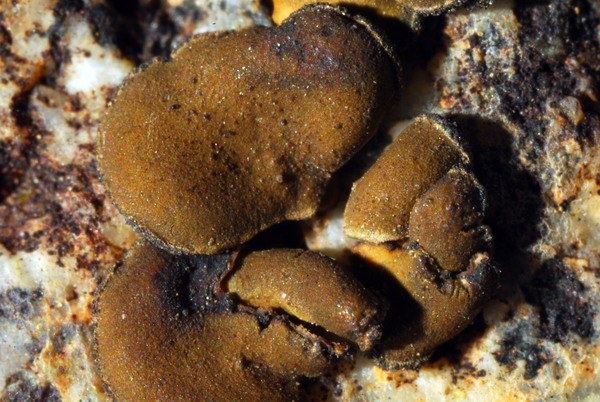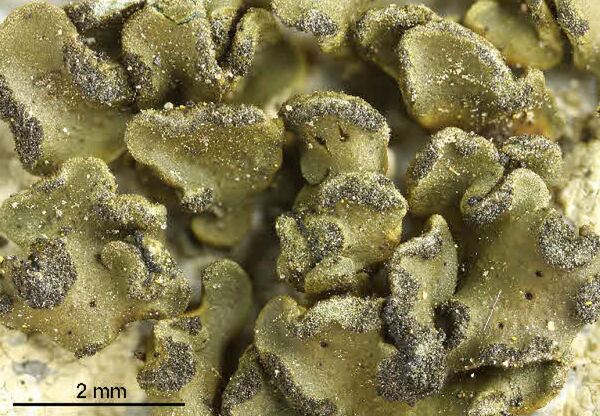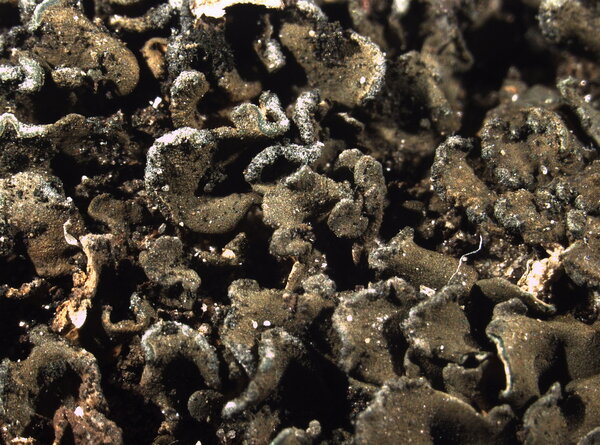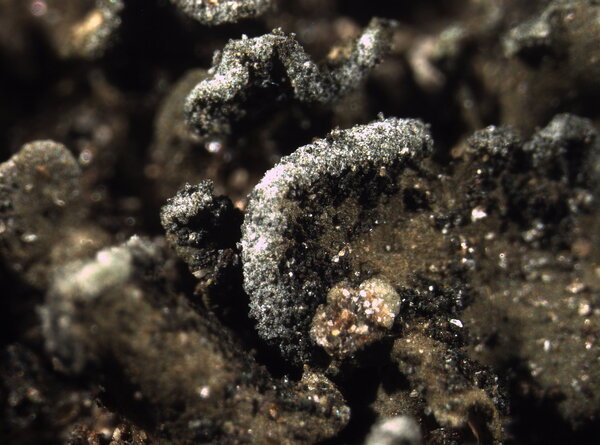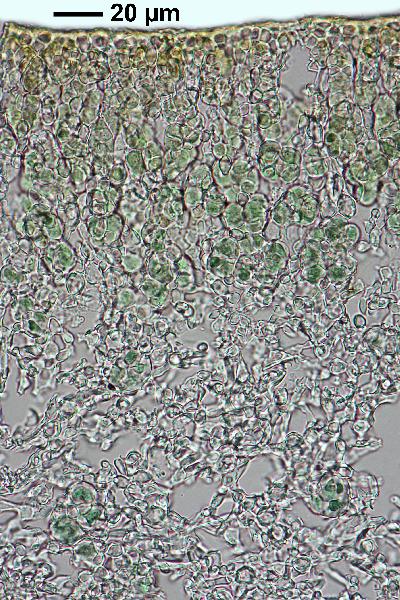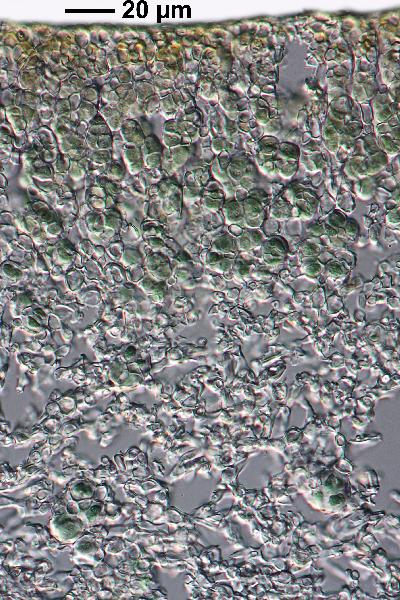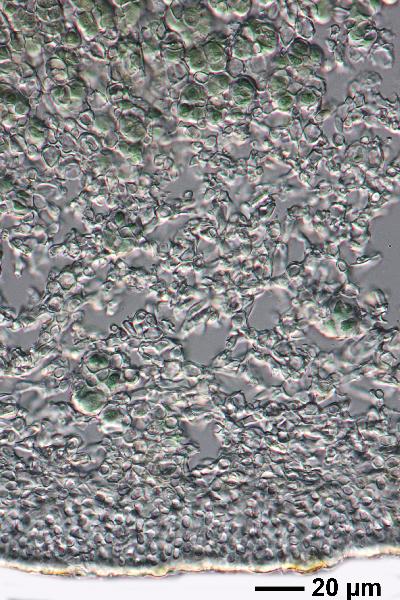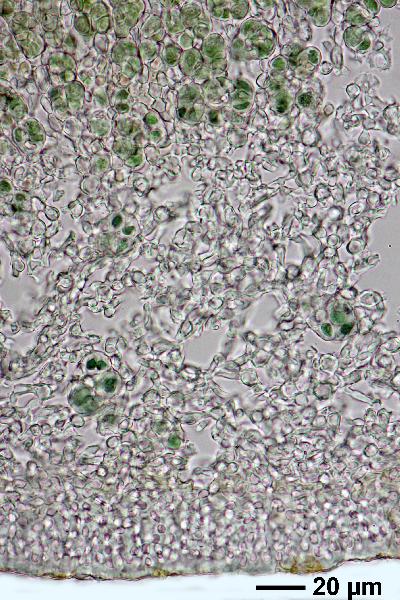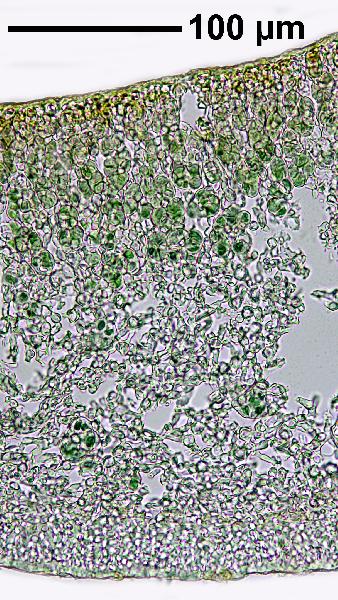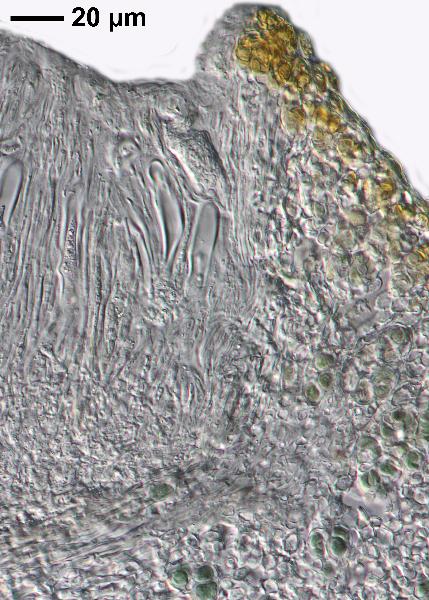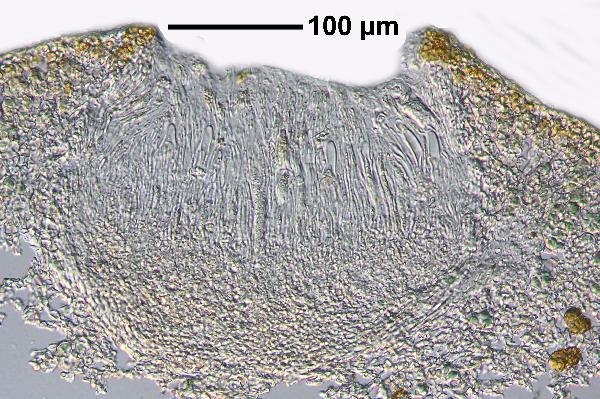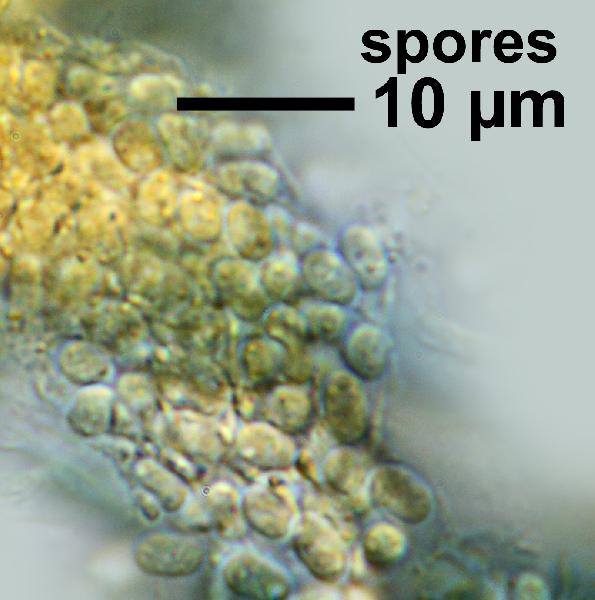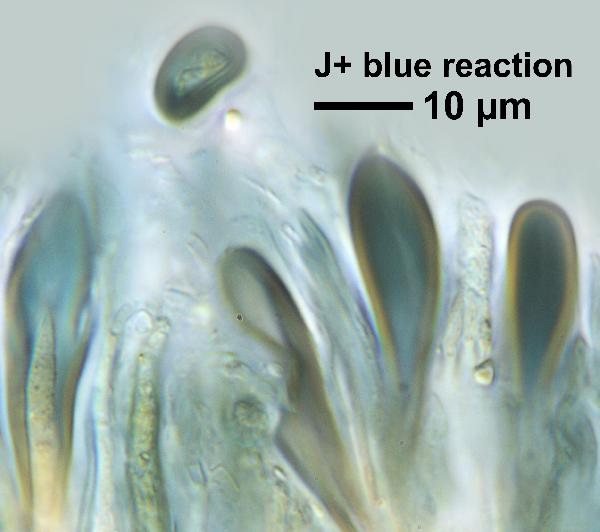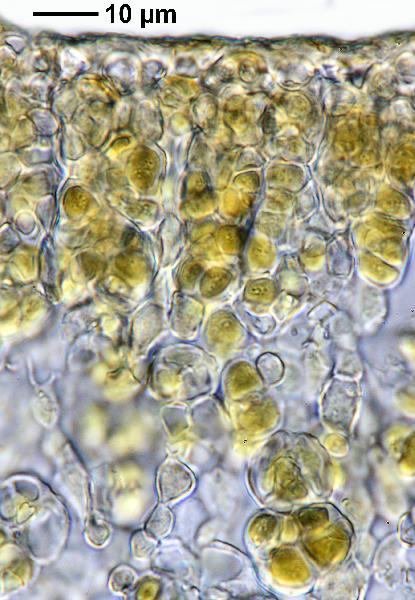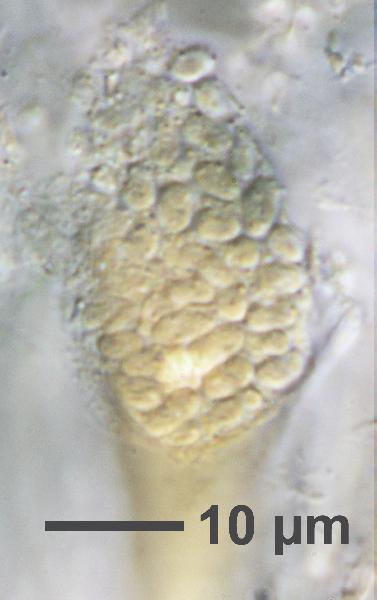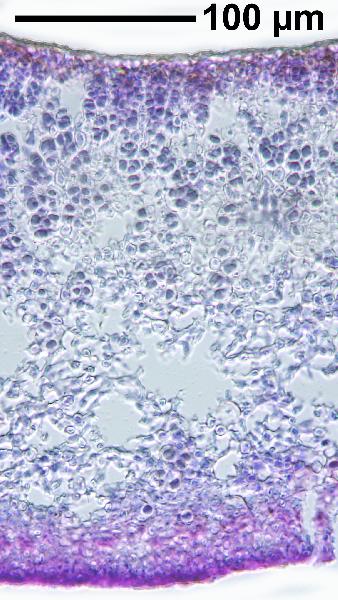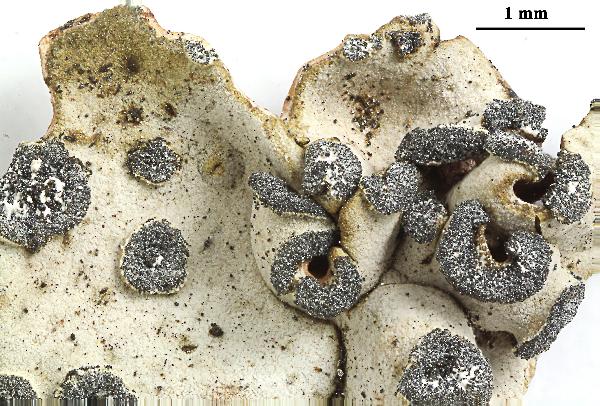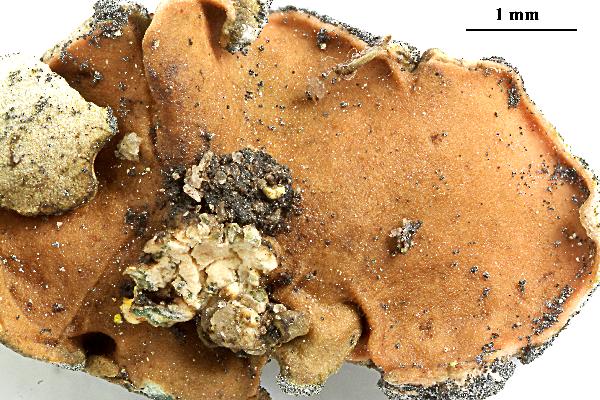Peltula euploca (Ach.) Poelt
in Pisùt, Zbor. Slov. Nar. Muz. Prir. Vedy, 13: 8, 1987. Basionym: Lichen euplocus Ach. - Lichenogr. Suec. Prodr.: 141, 1799.
Synonyms: Anema veronense (A. Massal.) Jatta; Endocarpiscum guepinii (Delise) Nyl.; Endocarpon guepinii ("queppinii") Delise; Endocarpon laciniatum Bagl. & Carestia?; Endocarpon maravignae Tornab.; Guepinia polyspora Hepp; Heppia dermatocarpea Räsänen; Heppia euploca (Ach.) Vain.; Heppia guepinii (Delise) Nyl.; Heppia nigrolimbata (Nyl.) Nyl.; Heppia polyphylla B. de Lesd.; Heppia ruinicola Nyl.; Heppia tenebrata Nyl.; Omphalaria veronensis A. Massal.; Peltula guepinii (Delise) Gyeln.; Peltula laciniata (Bagl. & Carestia) Poelt; Peltula ruinicola (Nyl.) Gyeln.; Thyrea veronensis (A. Massal.) A. Massal.
Distribution: N - Ven (Lazzarin 2000b), TAA (Obermayer 2004), Lomb (Valcuvia & al. 2003, Gheza 2019b), Piem (Clerc & al. 1999, Isocrono & al. 2003), VA (Piervittori & Isocrono 1999), Emil (Tretiach 2004, Fariselli & al. 2020), Lig (Passauer 1976, Tretiach 1993, Watson 2014). C - Tosc (Tretiach 1993, Pišút 1997), Laz (Tretiach 1993), Sar (Monte 1993, Tretiach 1993, Rizzi & al. 2011, Giordani & al. 2013). S - Camp (Catalano & al. 2016), Pugl (Nimis & Tretiach 1999), Cal (Puntillo 1996), Si (Tretiach 1993, Nimis & al. 1996b).
Description: Thallus foliose, peltate-umbilicate, of scattered, up to 15 mm wide individual squamules with down-rolled, sorediate margins. Upper surface olive-green to dark olive-brown, with marginal, dark blue-grey to black, farinose soredia in elongated soralia. Lower surface paler, often with a pinkish hue, attached by a central holdfast. Upper cortex mostly lacking, substituted by a 5-10 µm thick, brownish epinecral layer; photobiont layer clearly delimited; medulla of loosely interwoven hyphae with large air spaces; lower cortex with anticlinally arranged hyphae. Apothecia very rare, many per squamule, immersed, with a punctiform to expanded disc, 0.1-0.9 mm across. Proper exciple thin; epithecium brownish; hymenium colourless, I+ wine-red, K/I+ pale blue except near the asci which react K/I+ intensely blue, 100-220 µm high; paraphyses thin, sometimes anastomosing, rarely branched, the apical cells slightly swollen; hypothecium colourless. Asci 32-100-spored, clavate to obclavate, unitunicate-rostrate with a distinct, fringed external tunica, the walls I+ red or I+ blue, K/I+ intensely blue. Ascospores 1-celled, hyaline, narrowly ellipsoid, (5-)6-9(-10) x 3-6 µm. Pycnidia immersed, cerebriform, to 150 µm in diam, with unbranched conidiophores. Conidia simple, fusiform, 3-4 x 1-1.5(-2) µm. Photobiont cyanobacterial, chroococcoid, one-celled. Spot tests: K-, C-, KC-, P-, UV-. Chemistry: without lichen substances.Note: a widespread species of warm-dry areas, found on steeply inclined seepage tracks of basic siliceous rocks, with optimum below the montane belt.
Growth form: Foliose, umbilicate
Substrata: rocks
Photobiont: cyanobacteria, filamentous (e.g. Nostoc, Scytonema)
Reproductive strategy: mainly asexual, by soredia, or soredia-like structures (e.g. blastidia)
On otherwise dry surfaces with short periods of water seepage after rain
Commonnes-rarity: (info)
Alpine belt: absent
Subalpine belt: absent
Oromediterranean belt: absent
Montane belt: very rare
Submediterranean belt: very rare
Padanian area: absent
Humid submediterranean belt: rare
Humid mediterranean belt: rather rare
Dry mediterranean belt: rather common
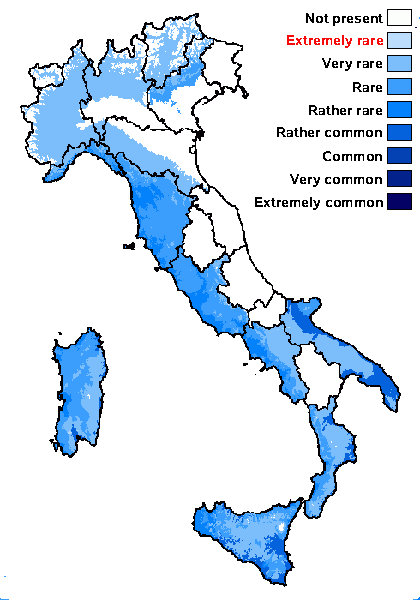
Predictive model
Herbarium samples
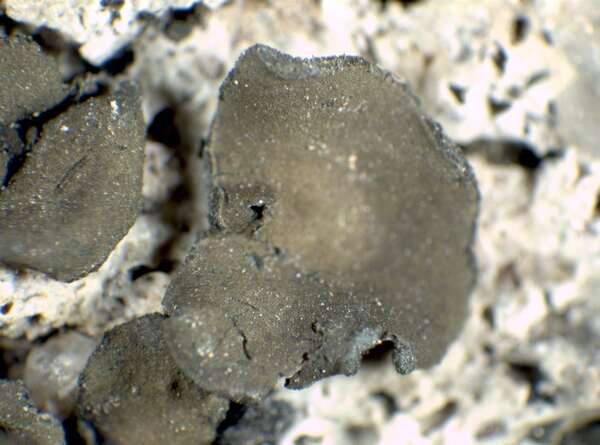

P.L. Nimis; Owner: Department of Life Sciences, University of Trieste
Herbarium: TSB (9610)
2001/12/03
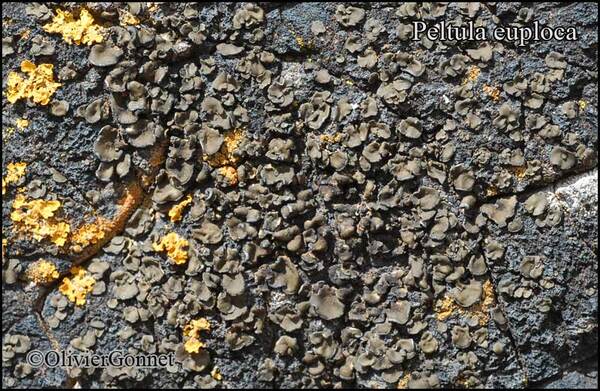
Courtesy Danièle et Olivier Gonnet - Source: https://www.afl-lichenologie.fr/Photos_AFL/Photos_AFL_P/Text_P/Peltula_euploca.htm
France, session AFL 2010 - Hérault
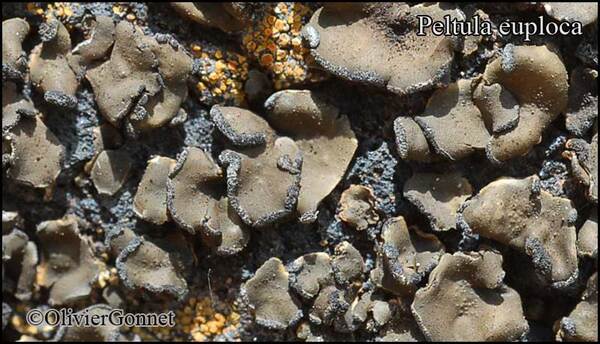
Courtesy Danièle et Olivier Gonnet - Source: https://www.afl-lichenologie.fr/Photos_AFL/Photos_AFL_P/Text_P/Peltula_euploca.htm
France, session AFL 2010 - Hérault
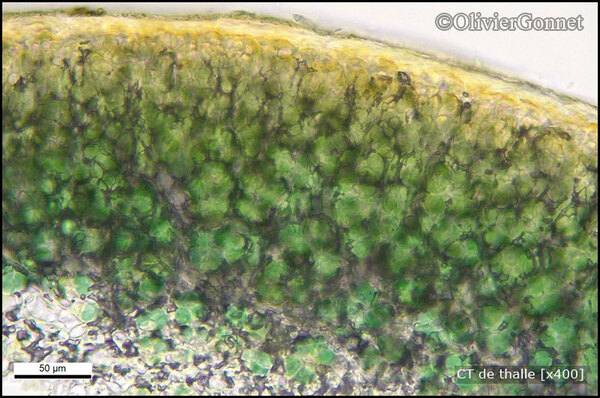
Courtesy Danièle et Olivier Gonnet - Source: https://www.afl-lichenologie.fr/Photos_AFL/Photos_AFL_P/Text_P/Peltula_euploca.htm
France, session AFL 2010 - Hérault

Courtesy Danièle et Olivier Gonnet - Source: https://www.afl-lichenologie.fr/Photos_AFL/Photos_AFL_P/Text_P/Peltula_euploca.htm
France, session AFL 2010 - Hérault

Courtesy Danièle et Olivier Gonnet - Source: https://www.afl-lichenologie.fr/Photos_AFL/Photos_AFL_P/Text_P/Peltula_euploca.htm
France, session AFL 2010 - Hérault
Growth form: Foliose, umbilicate
Substrata: rocks
Photobiont: cyanobacteria, filamentous (e.g. Nostoc, Scytonema)
Reproductive strategy: mainly asexual, by soredia, or soredia-like structures (e.g. blastidia)
On otherwise dry surfaces with short periods of water seepage after rain
Commonnes-rarity: (info)
Alpine belt: absent
Subalpine belt: absent
Oromediterranean belt: absent
Montane belt: very rare
Submediterranean belt: very rare
Padanian area: absent
Humid submediterranean belt: rare
Humid mediterranean belt: rather rare
Dry mediterranean belt: rather common

Predictive model
| Herbarium samples |


P.L. Nimis; Owner: Department of Life Sciences, University of Trieste
Herbarium: TSB (9610)
2001/12/03

Courtesy Danièle et Olivier Gonnet - Source: https://www.afl-lichenologie.fr/Photos_AFL/Photos_AFL_P/Text_P/Peltula_euploca.htm
France, session AFL 2010 - Hérault

Courtesy Danièle et Olivier Gonnet - Source: https://www.afl-lichenologie.fr/Photos_AFL/Photos_AFL_P/Text_P/Peltula_euploca.htm
France, session AFL 2010 - Hérault

Courtesy Danièle et Olivier Gonnet - Source: https://www.afl-lichenologie.fr/Photos_AFL/Photos_AFL_P/Text_P/Peltula_euploca.htm
France, session AFL 2010 - Hérault

Courtesy Danièle et Olivier Gonnet - Source: https://www.afl-lichenologie.fr/Photos_AFL/Photos_AFL_P/Text_P/Peltula_euploca.htm
France, session AFL 2010 - Hérault

 INDEX FUNGORUM
INDEX FUNGORUM
 GBIF
GBIF
 DOLICHENS
DOLICHENS
